Early Summer 2025 Snapshots From Extension’s Pollinator Paradise Garden
go.ncsu.edu/readext?1083581
en Español / em Português
El inglés es el idioma de control de esta página. En la medida en que haya algún conflicto entre la traducción al inglés y la traducción, el inglés prevalece.
Al hacer clic en el enlace de traducción se activa un servicio de traducción gratuito para convertir la página al español. Al igual que con cualquier traducción por Internet, la conversión no es sensible al contexto y puede que no traduzca el texto en su significado original. NC State Extension no garantiza la exactitud del texto traducido. Por favor, tenga en cuenta que algunas aplicaciones y/o servicios pueden no funcionar como se espera cuando se traducen.
Português
Inglês é o idioma de controle desta página. Na medida que haja algum conflito entre o texto original em Inglês e a tradução, o Inglês prevalece.
Ao clicar no link de tradução, um serviço gratuito de tradução será ativado para converter a página para o Português. Como em qualquer tradução pela internet, a conversão não é sensivel ao contexto e pode não ocorrer a tradução para o significado orginal. O serviço de Extensão da Carolina do Norte (NC State Extension) não garante a exatidão do texto traduzido. Por favor, observe que algumas funções ou serviços podem não funcionar como esperado após a tradução.
English
English is the controlling language of this page. To the extent there is any conflict between the English text and the translation, English controls.
Clicking on the translation link activates a free translation service to convert the page to Spanish. As with any Internet translation, the conversion is not context-sensitive and may not translate the text to its original meaning. NC State Extension does not guarantee the accuracy of the translated text. Please note that some applications and/or services may not function as expected when translated.
Collapse ▲Cooperative Extension’s Pollinator Paradise Demonstration Garden was created in late 2008 at Chatham Mills in Pittsboro to provide forage from early spring to late fall for pollinators such as native bees, honey bees, wasps, butterflies, flower flies, hummingbirds, beetles, and other beneficial insects. The garden features over 225 unique species of perennials, 85% of which are native to North Carolina. The garden is a great teaching tool that I use to conduct workshops and tours for hundreds of folks each year. It has taught me so much and I enjoy sharing this knowledge with others. Below you can see photos of the pollinator garden from mid-June through mid-July.
Click here for links to all the seasonal photo collections
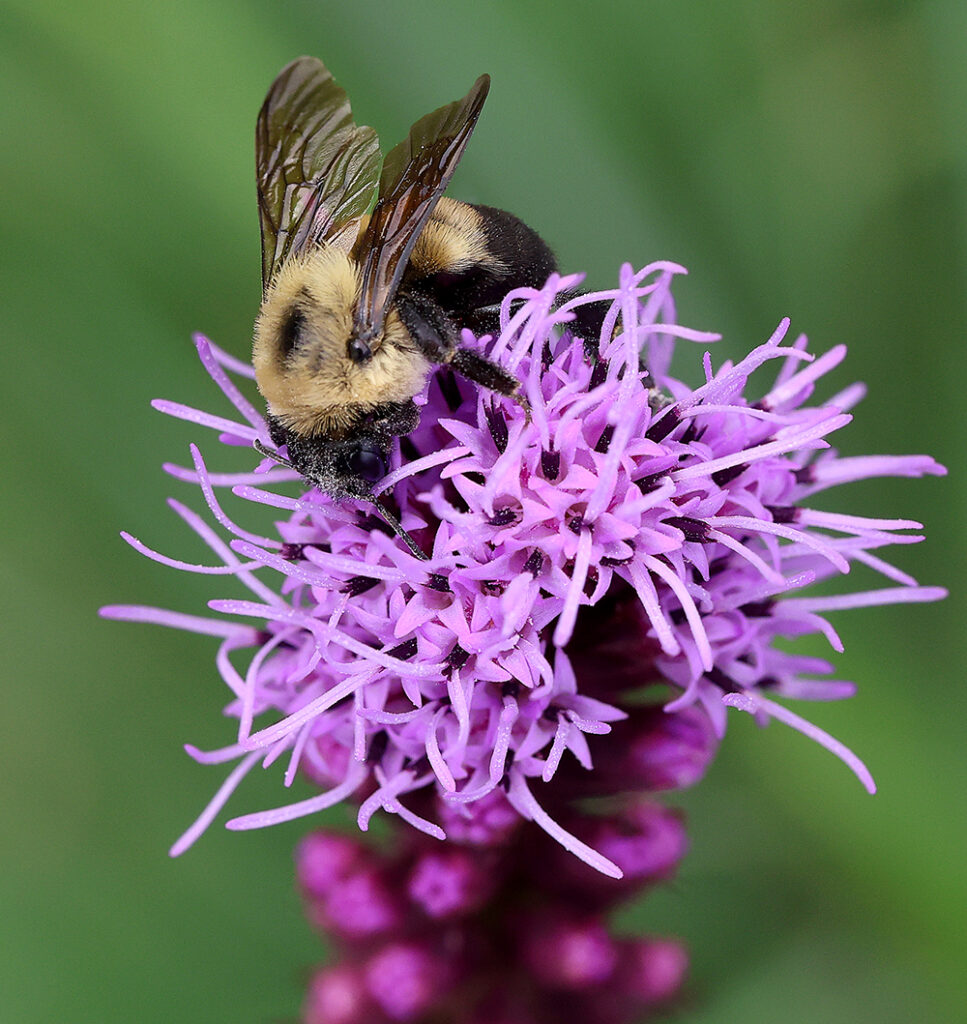
Bumble bee on blazing star (Liatris spicata). Photo by Debbie Roos.
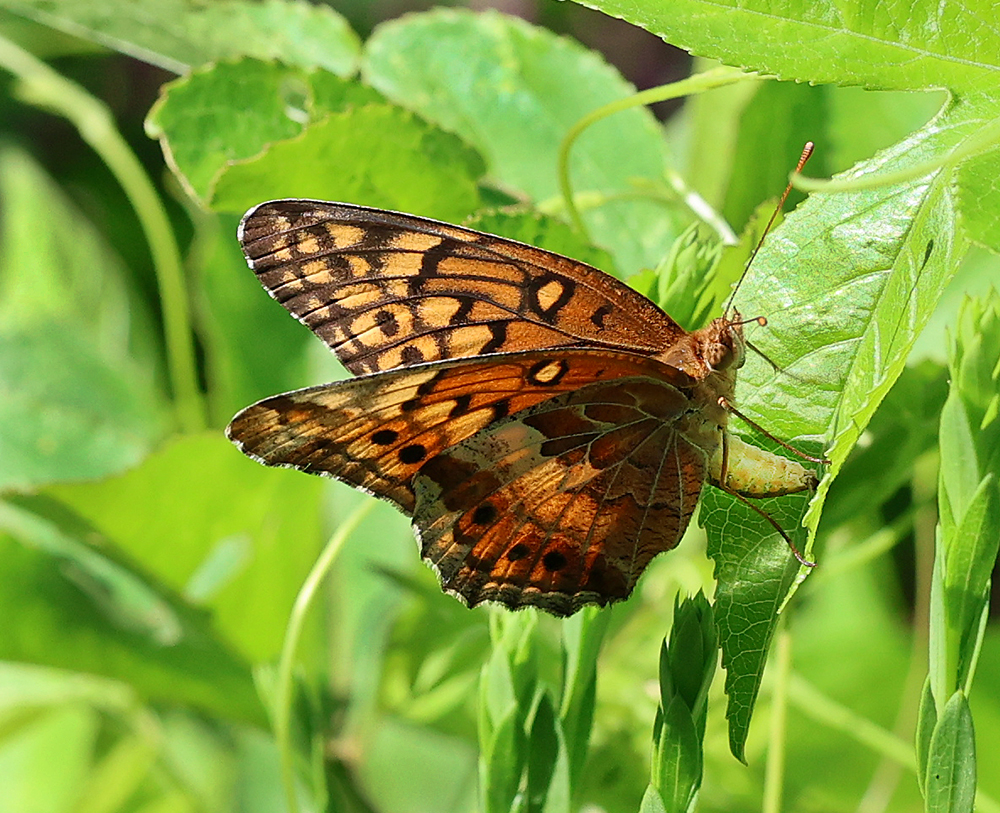
Variegated fritillary butterfly laying an egg on purple passionflower vine (Passiflora incarnata). Photo by Debbie Roos.
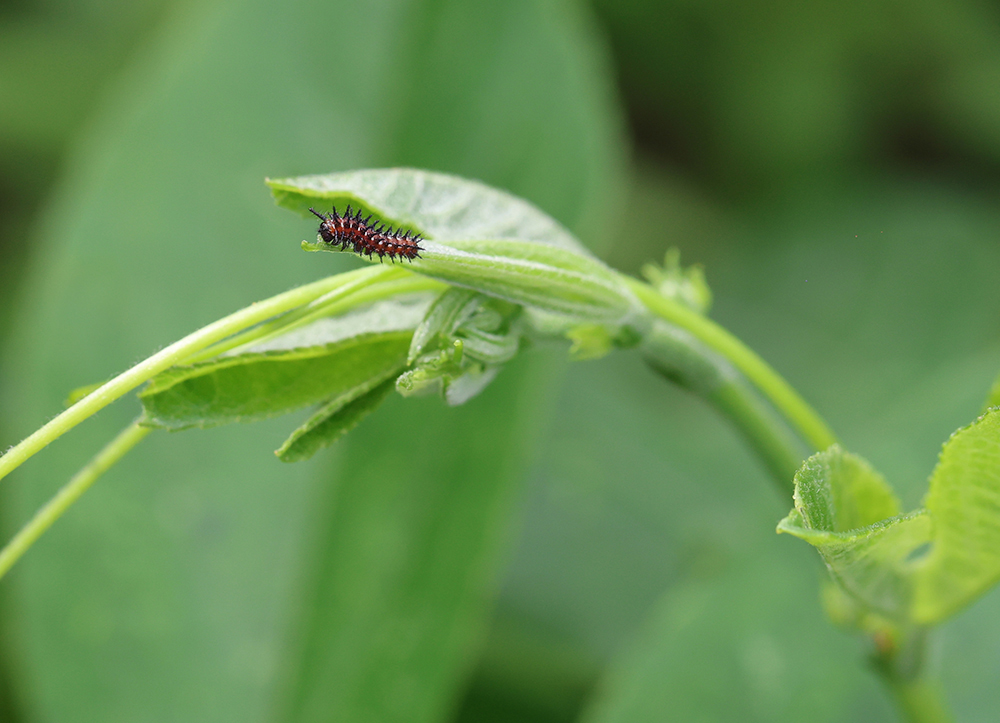
Tiny early instar variegated fritillary caterpillar on purple passionflower vine. Photo by Debbie Roos.
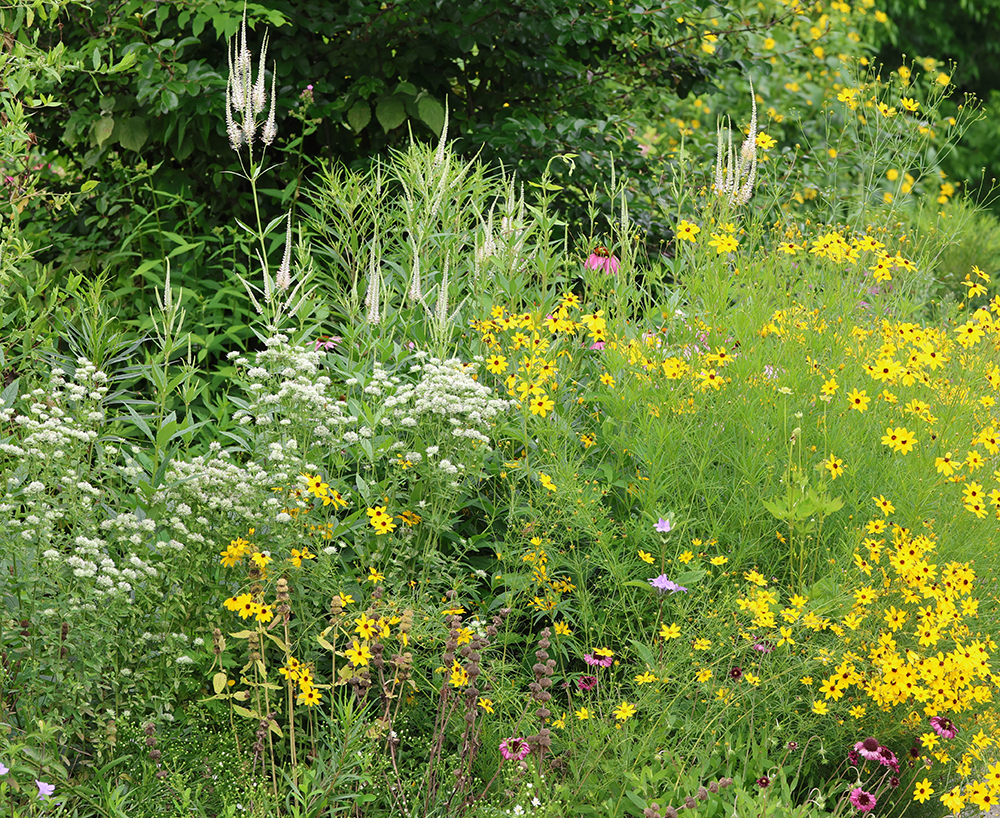
Appalachian mountain mint, culver’s root, whorled tickseed. Photo by Debbie Roos.
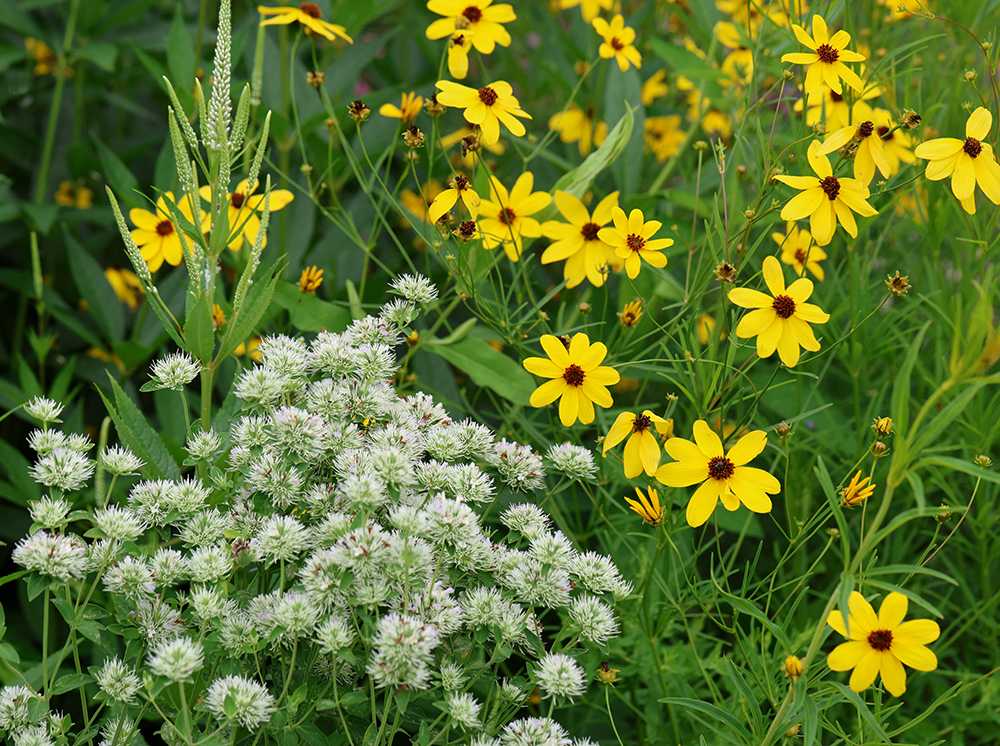
Culver’s root, Appalachian mountain mint, and whorled tickseed. Photo by Debbie Roos.
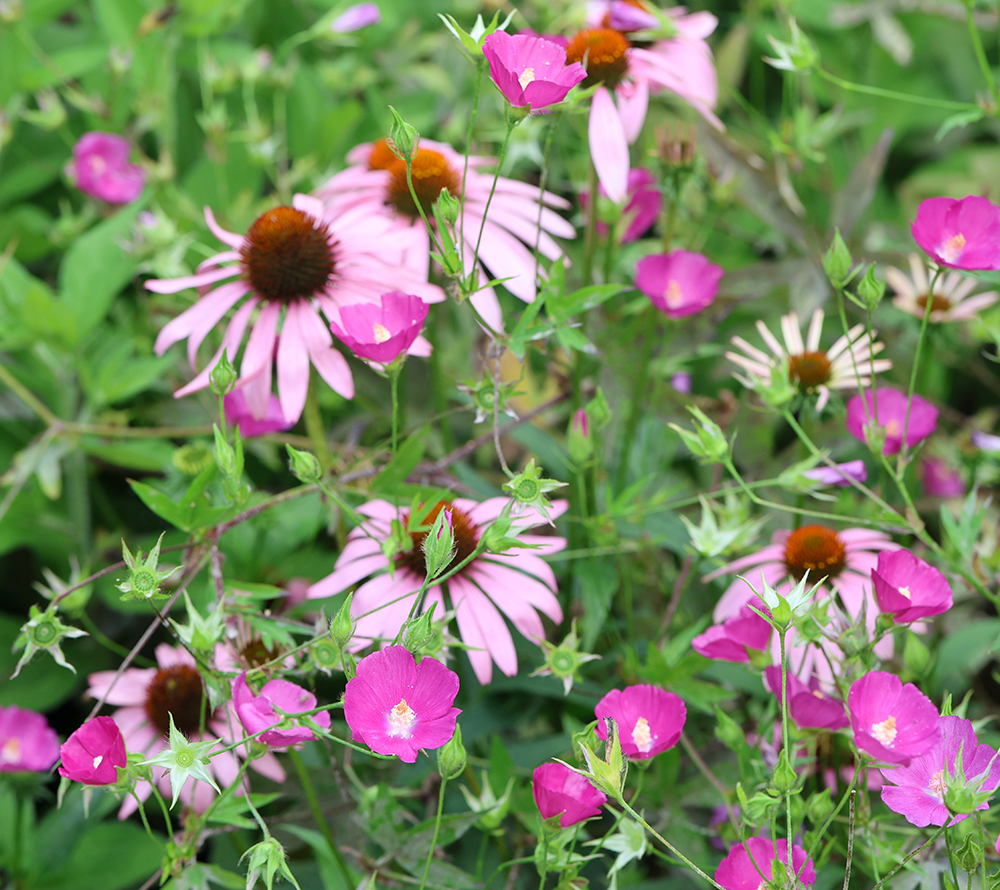
Purple coneflowers (Echinacea purpurea) and prairie poppy mallow (Callirhoe involucrata). Photo by Debbie Roos.
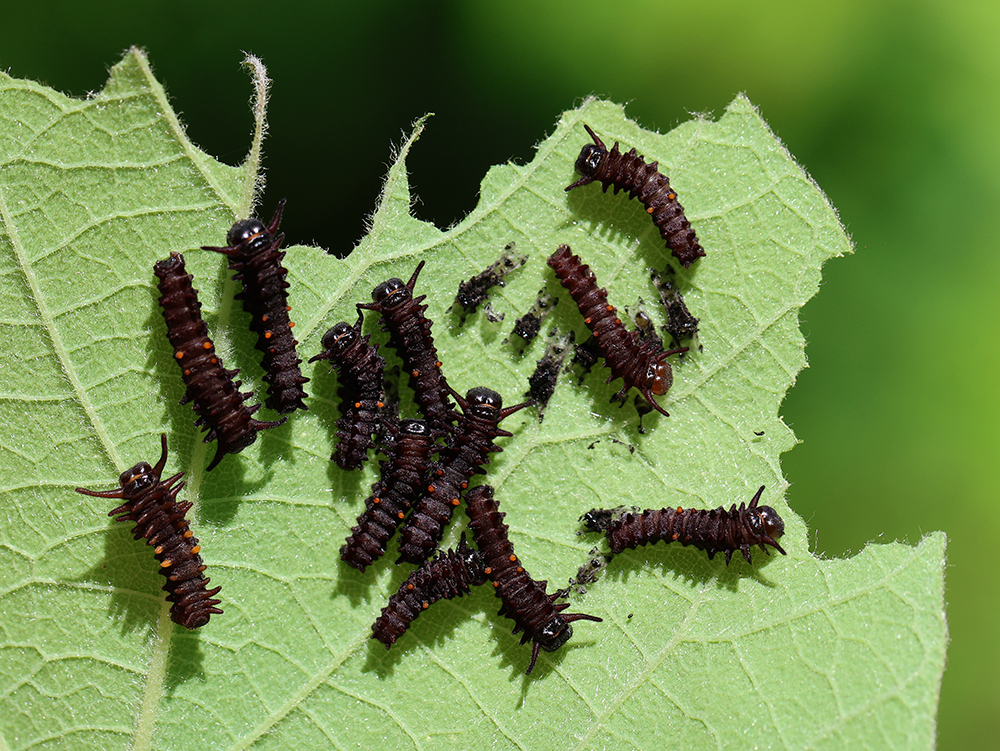
Pipevine swallowtail caterpillars on Dutchman’s pipe (Aristolochia tomentosa). Photo by Debbie Roos.
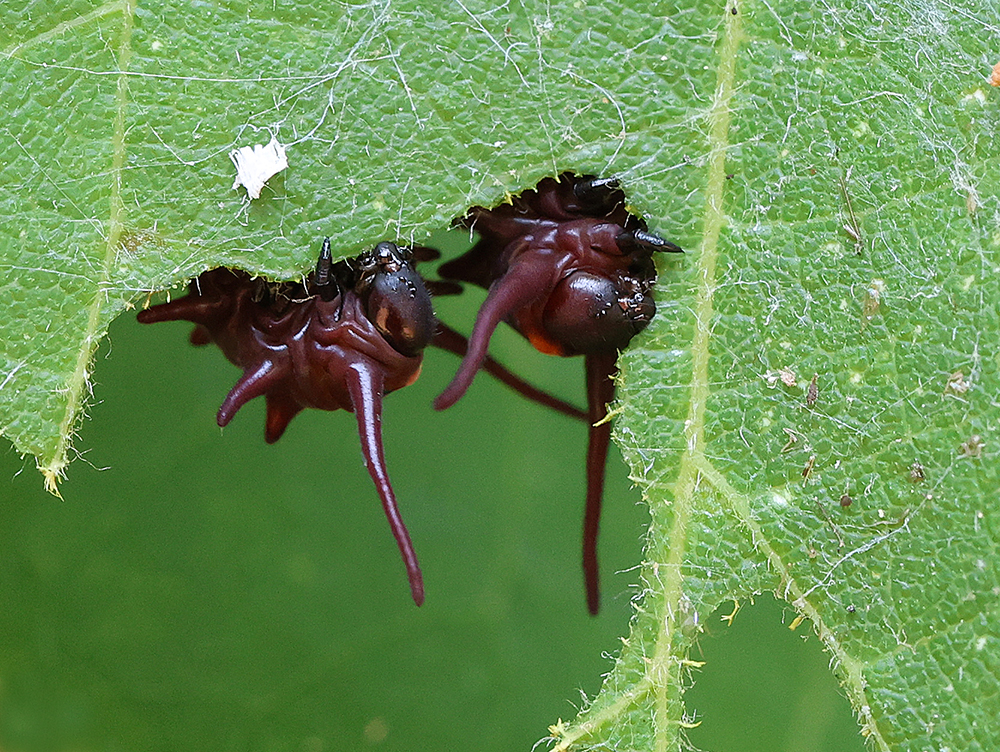
Pipevine swallowtail caterpillars on Dutchman’s pipe. Photo by Debbie Roos.
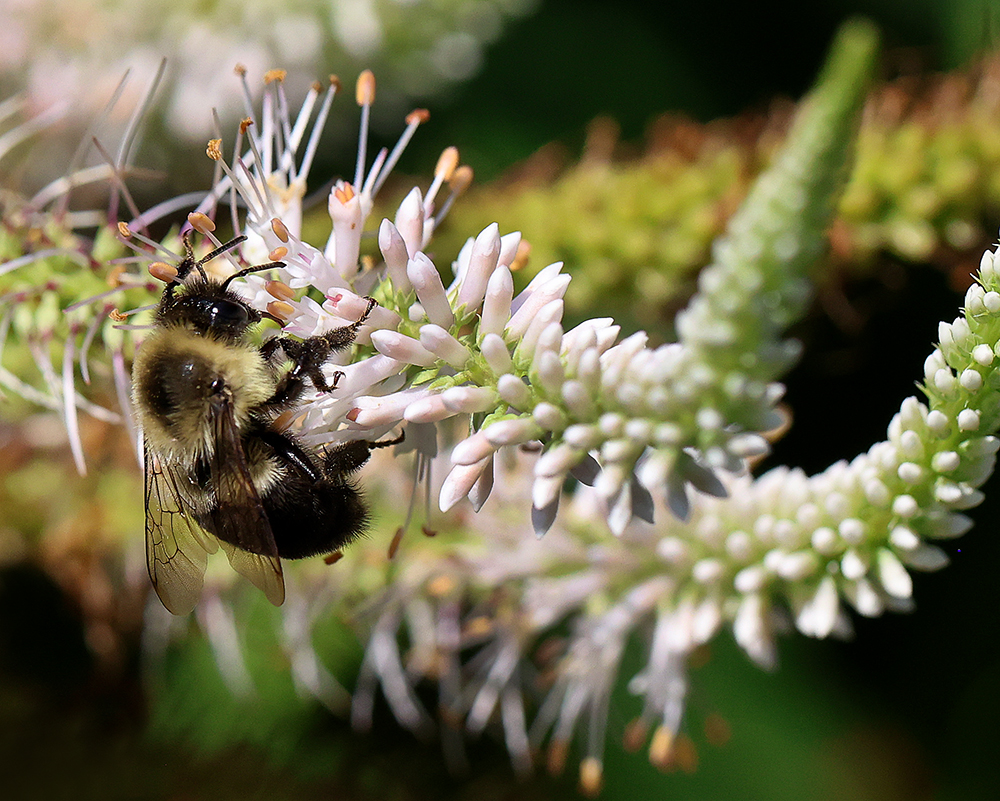
Bumble bee on culver’s root (Veronicastrum virginicum). Photo by Debbie Roos.
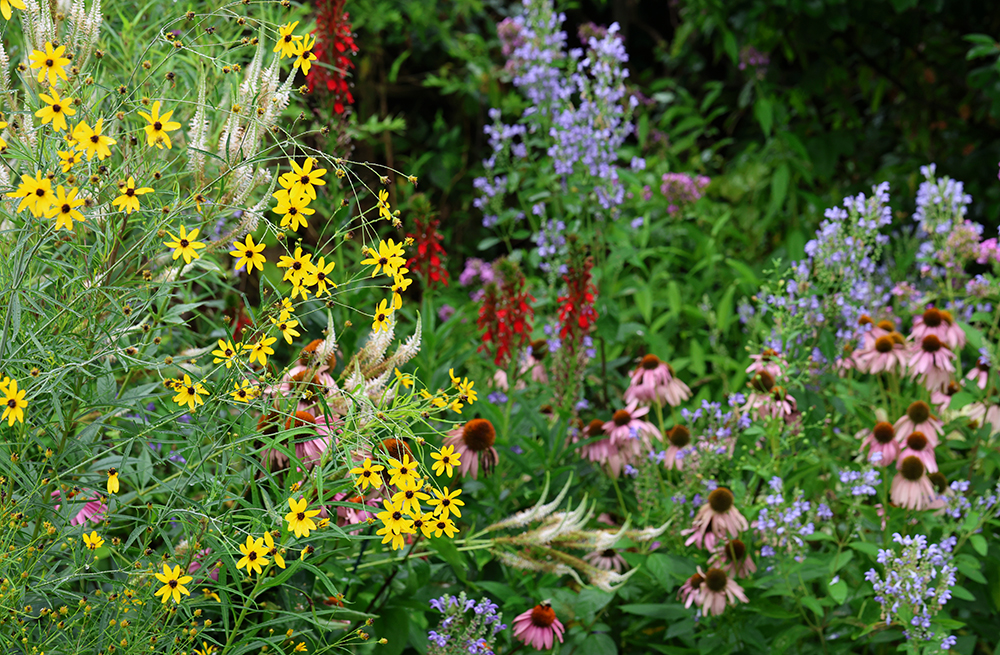
One of the garden beds in early July. Photo by Debbie Roos.
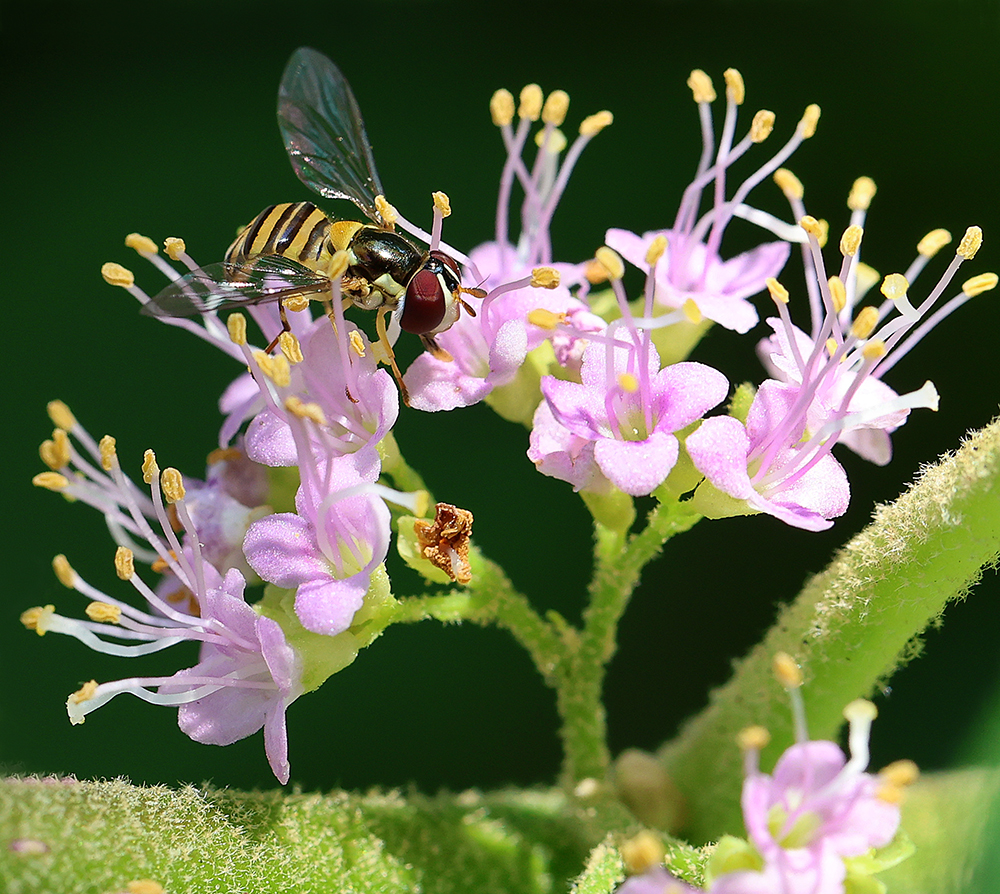
Syrphid fly on beautyberry bloom (Callicarpa americana). Photo by Debbie Roos.
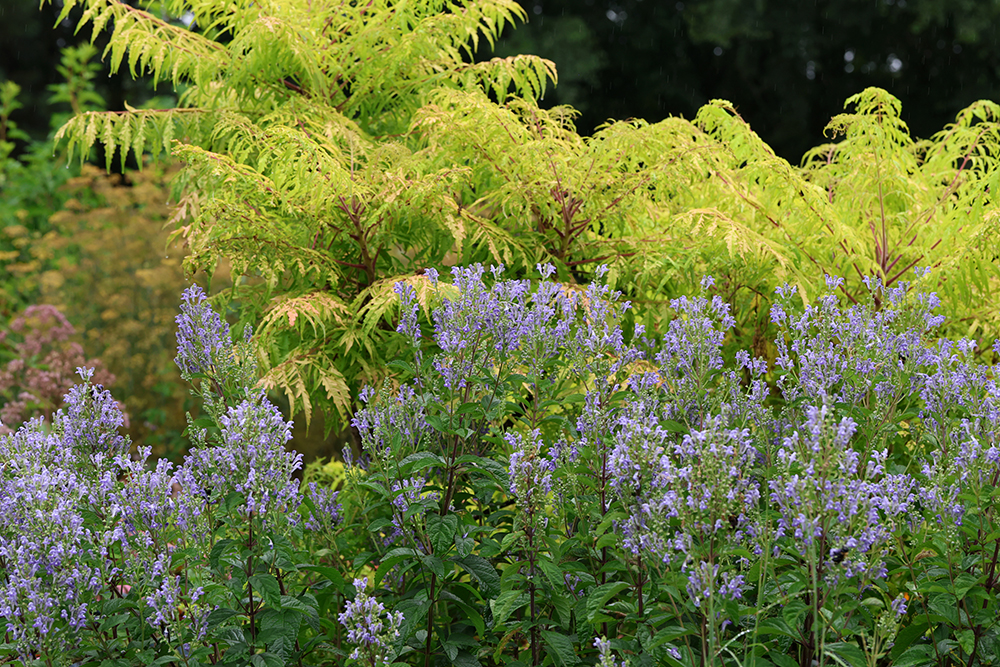
Hoary skullcap with staghorn sumac. Photo by Debbie Roos.
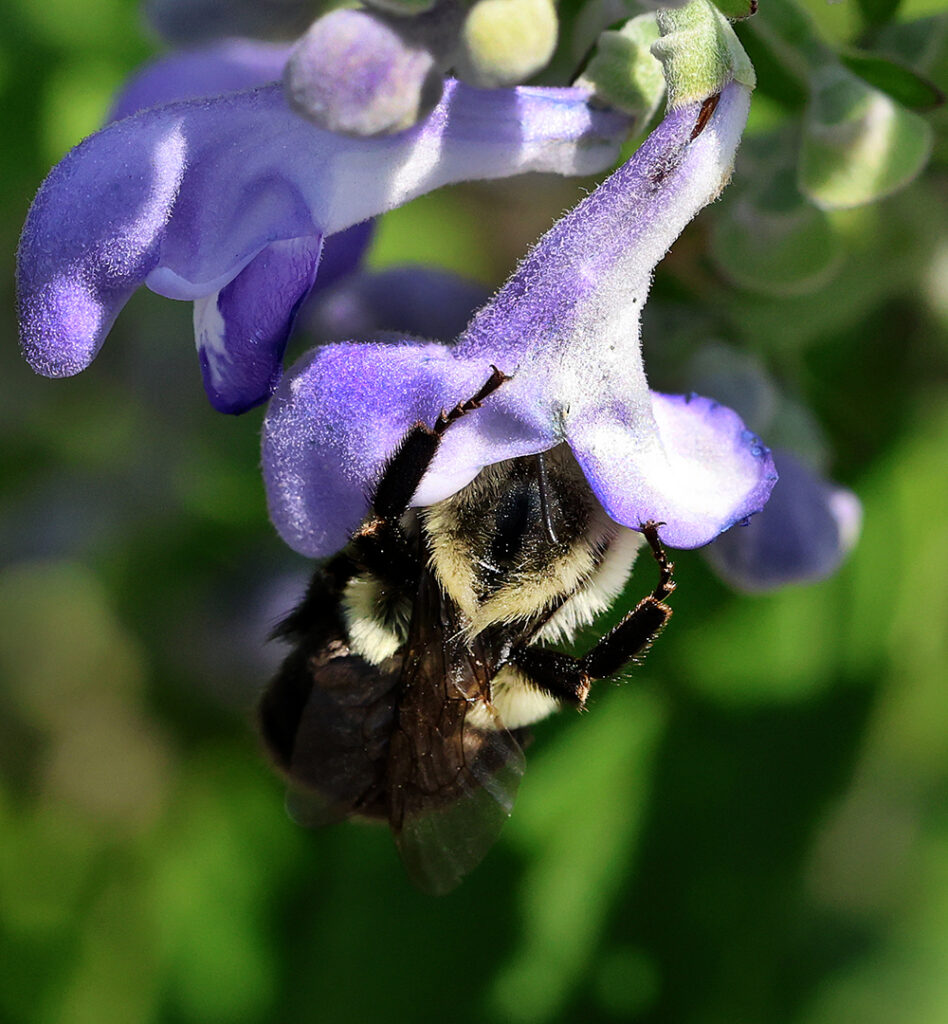
Bumble bee on hoary skullcap (Scutellaria incana). Photo by Debbie Roos.

One of the many parking lot islands in the pollinator garden. Photo by Debbie Roos.
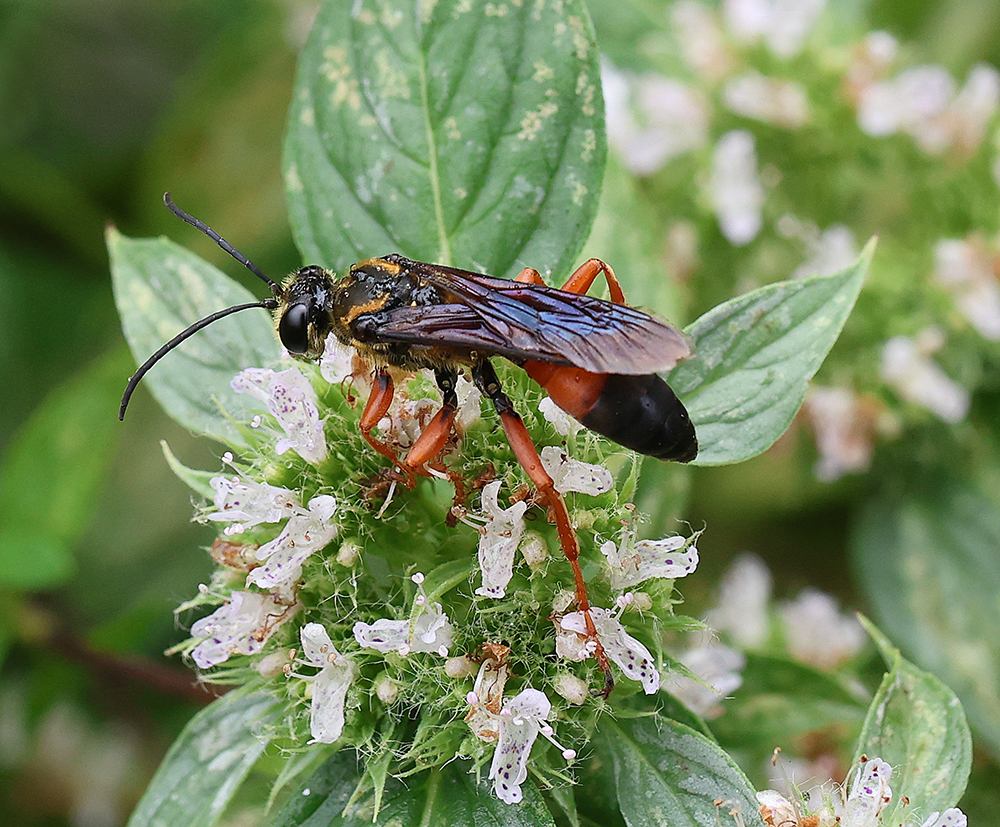
Great golden digger wasp foraging on hoary mountain mint (Pycnanthemum incanum). Photo by Debbie Roos.
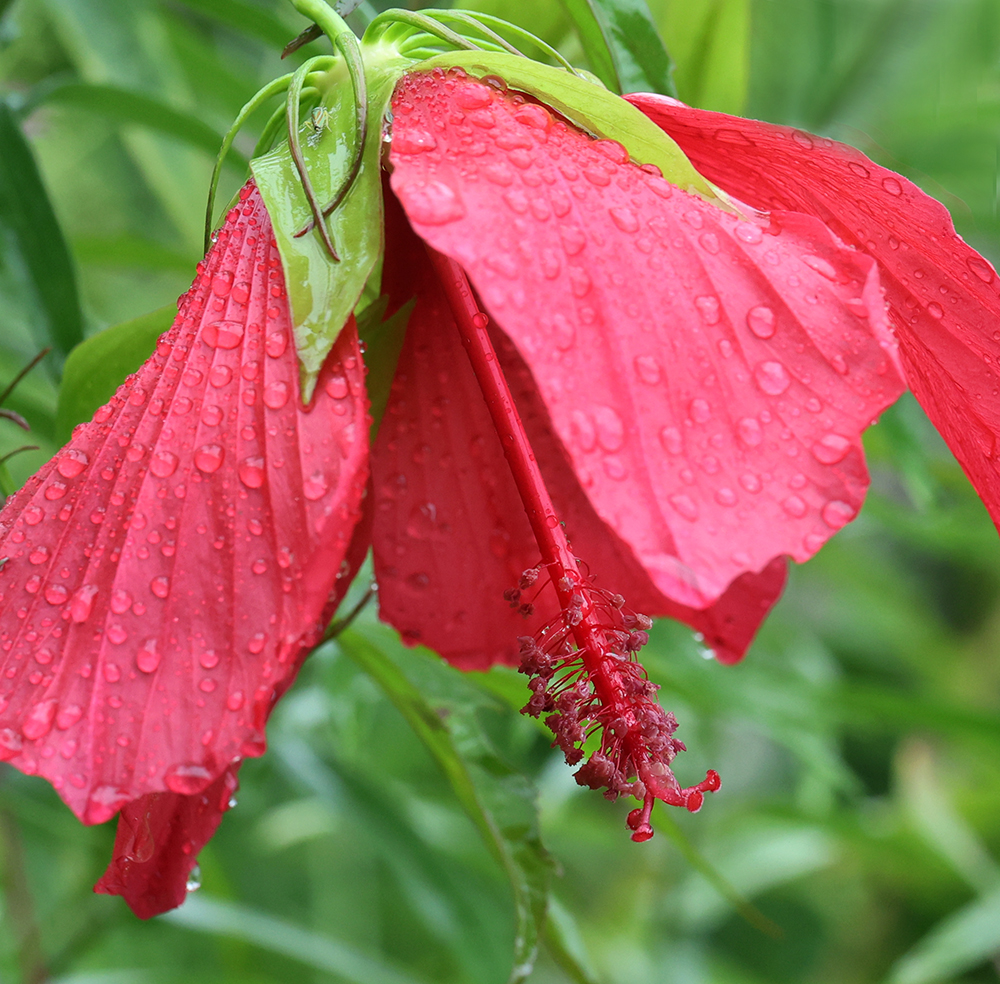
Red rose mallow (Hibiscus coccineus) loves the rain! Photo by Debbie Roos.
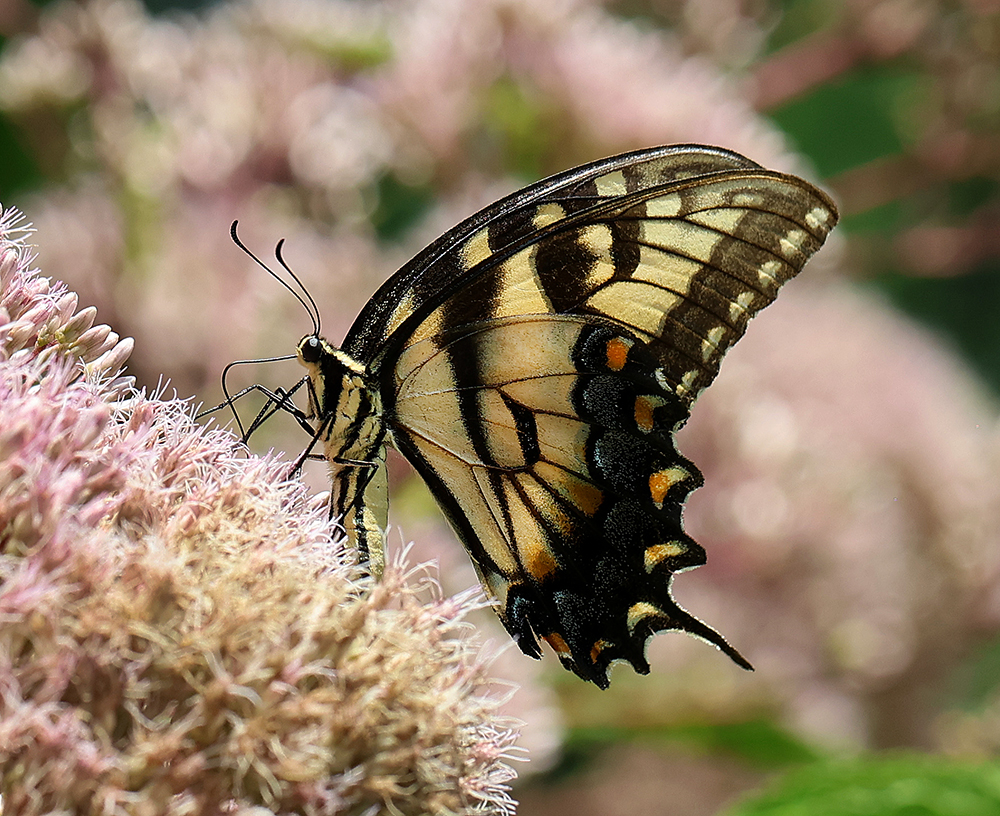
Eastern tiger swallowtail on joe-pye weed (Eutrochium dubium). Photo by Debbie Roos.
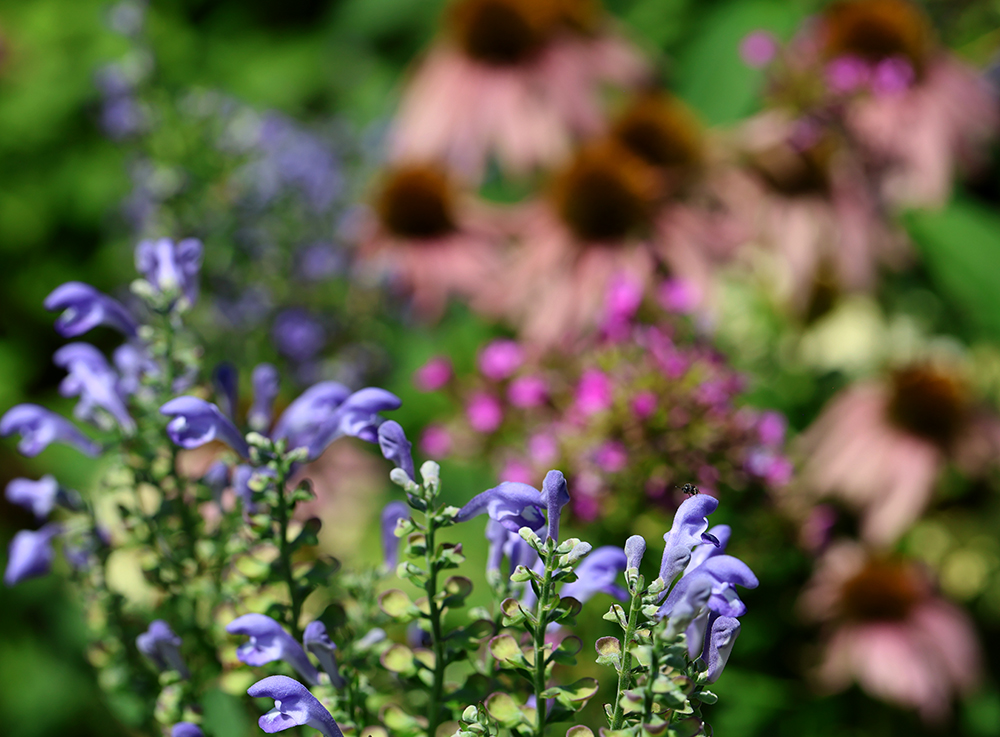
Hoary skullcap, ‘Jeana’ phlox, and coneflowers. Photo by Debbie Roos.
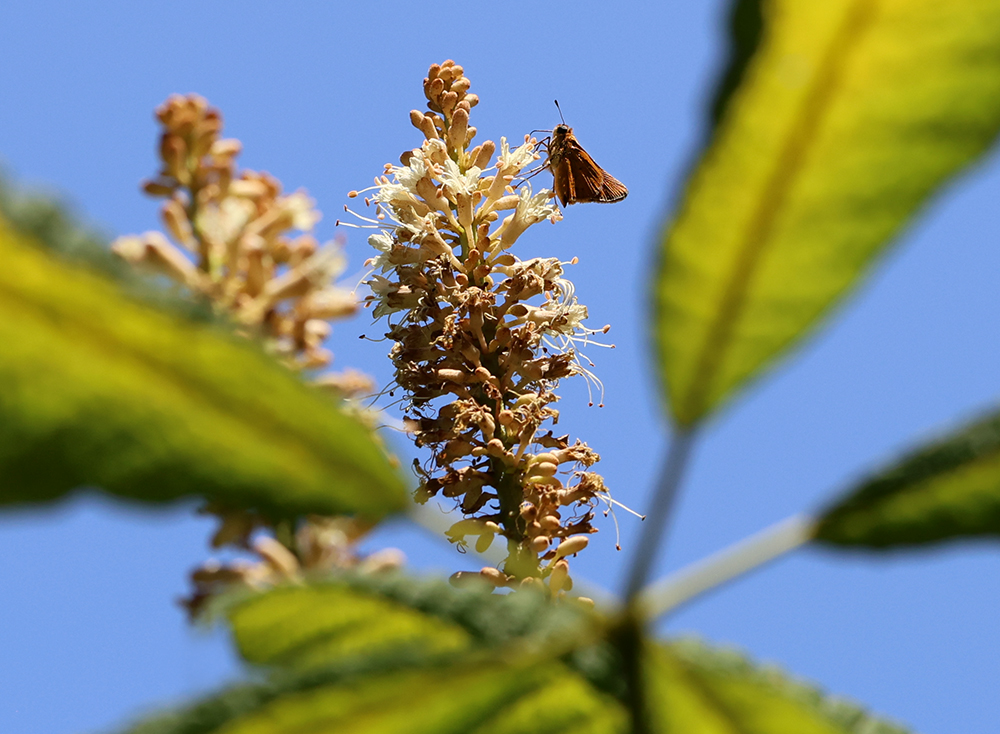
Skipper nectaring on bottlebrush buckeye (Aesculus parviflora). Photo by Debbie Roos.
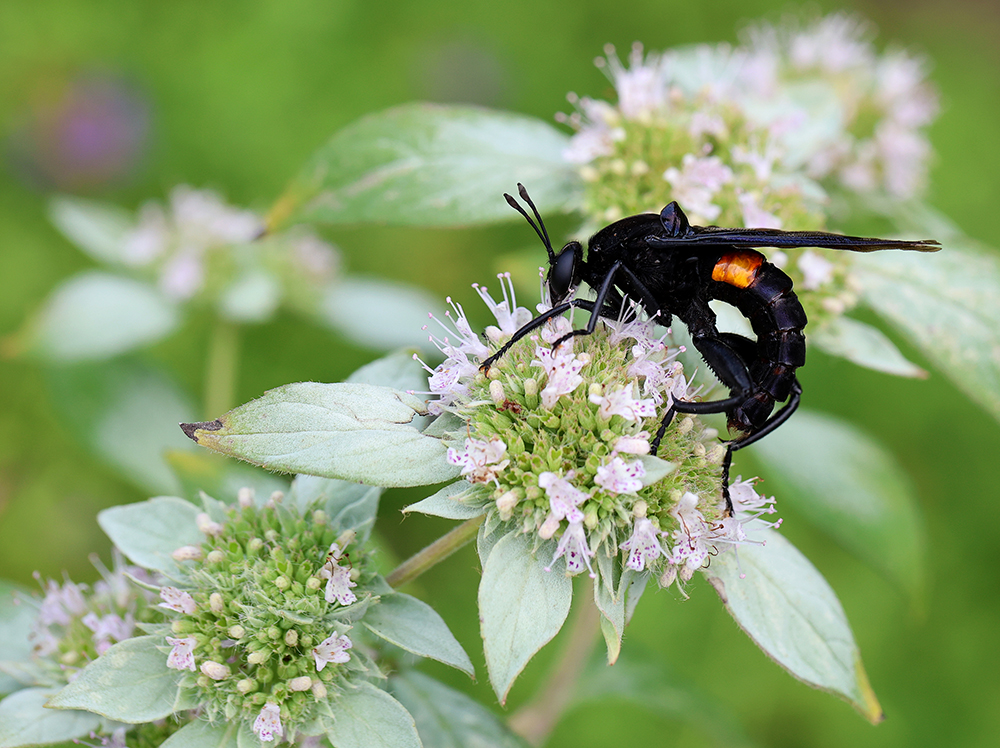
Clubbed mydas fly on mountain mint. Often confused with wasps, mydas flies lay their eggs in soil or rotting wood and the larvae prey on beetle larvae. Photo by Debbie Roos.
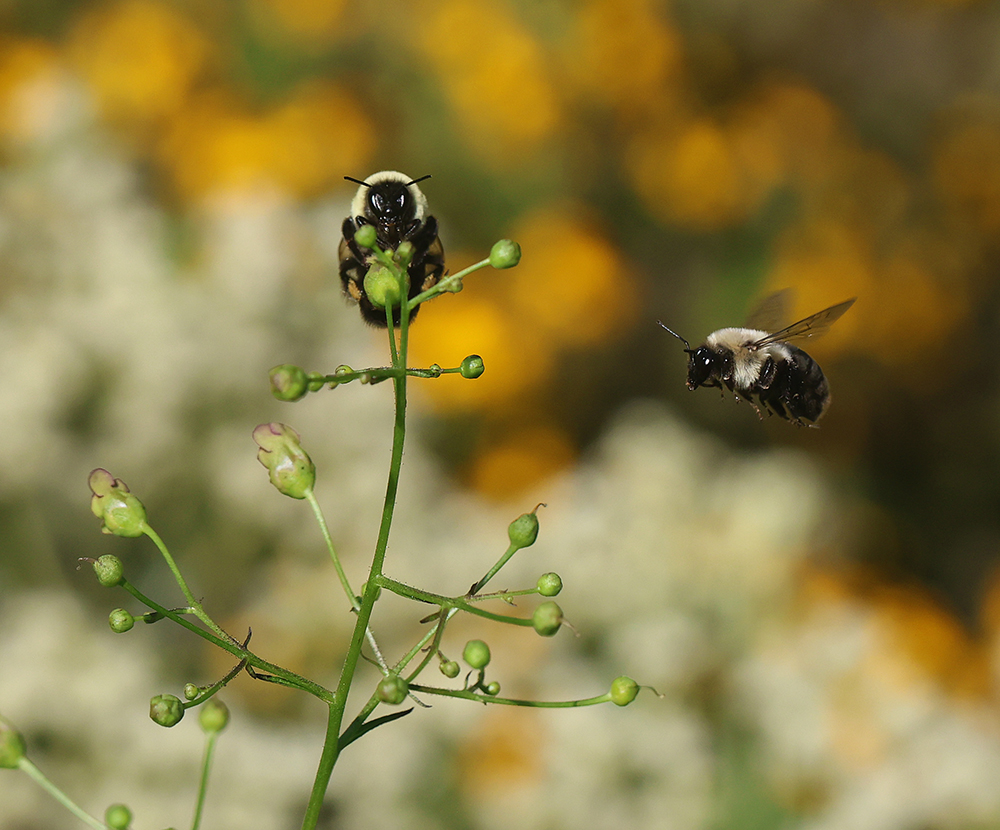
Bumble bees and late figwort (Scrophularia marilandica). Photo by Debbie Roos.
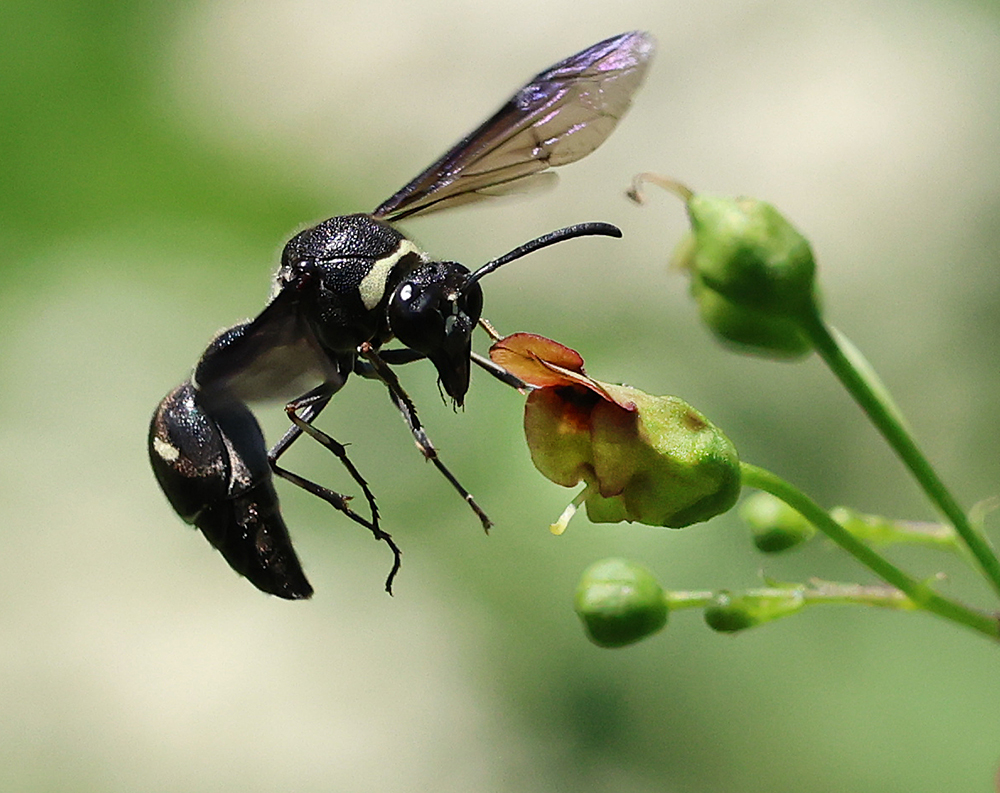
Potter wasp on late figwort. Photo by Debbie Roos.
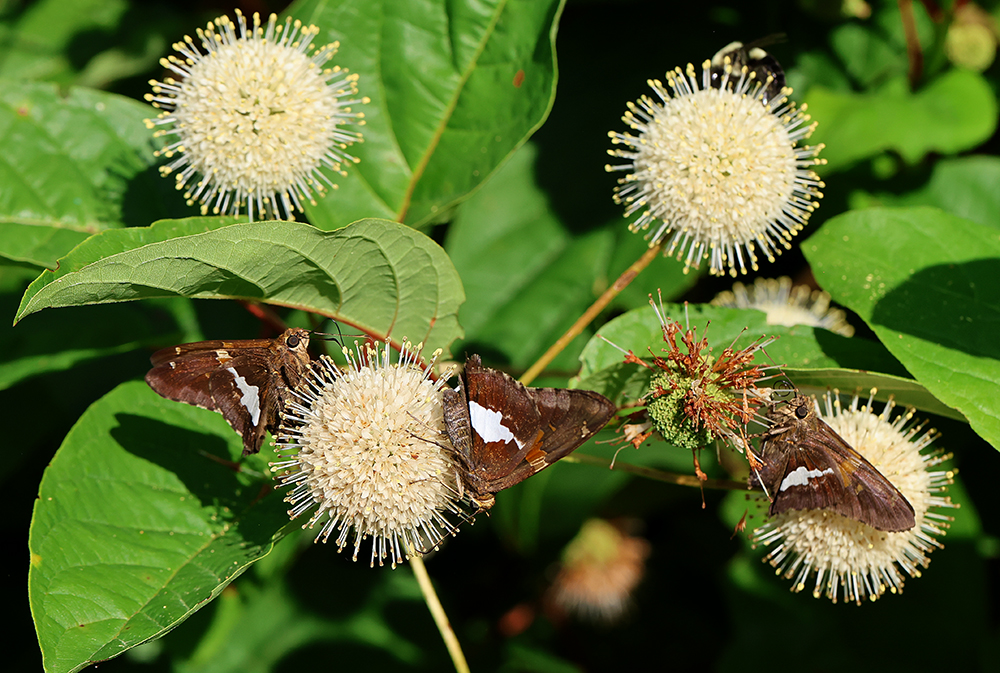
Silver spotted skippers on buttonbush (Cephalanthus occidentalis). Photo by Debbie Roos.
For more information:
Pollinator Paradise Garden website
What’s in Bloom in the Pollinator Garden – updated bi-weekly!


